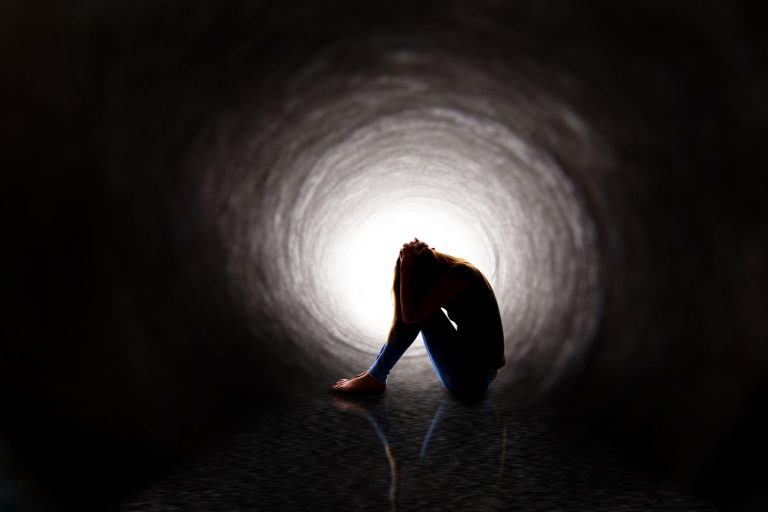
This article is written by Vartika Jain.
Table of Contents
Abstract
Suicide is a lethal violence, which poses a serious public mental health problem across the globe. Suicide can be understood as an intentional tendency of an individual to take one’s own life. According to WHO’s report, approx one million people die every year because of suicide and suicide has been classified as one of the main reason for death. Different nations have different notion on suicide, for some it might be a disease, for some it might be immoral or some may consider it as a crime. Therefore, it becomes impossible to have any one theory which defines the complex act of suicide without any flaws or difficulties. Throughout the history, suicide has been evolved with a surprisingly wide variety of reactions—confusion, dismissal, glorification, empathy, anger, moral or religious condemnation, but despite all this the topic of suicide is never uncontroversial. As of now the concept of suicide is controversial, be it from sociological aspect, constitutional aspect or religious or moral aspect. With the evolution of time, suicide has now become a multidisciplinary scientific study, where each of its disciples gives about a deep insight into the topic. Modernization, a social and economic process consists of three co-related processes of industrialization, urbanization and secularization, which influences general population suicide rates. Modernization, along with these processes, can corrode the relationship that an individual shares with the society and lead to questioning of religion and weakening of faith. Religion impacts suicides. Several times religious preaching and religious commitment acts as a protective layer in prevention of suicides. Apart from discussing on religious and sociological aspect, the researcher will discuss suicide with respect to India, laws regulating suicide and measures of government and other organizations to prevent suicide in India.
Introduction
Suicide is violence, a lethal one. It poses a serious threat on the metal health of the public of any nation. With the passage of time, the suicide rates are increasing overwhelming, thus, leading the scholars to ponder upon the question as to what are the causes of suicide, what are the factors that enable person to commit suicide, etc. Relying upon the WHO report, around one million people die every year worldwide, because of suicide. Suicide has now become a major cause of death among the people, especially for people, below 25 years of age. With the evolution of new era, it become difficult to clearly define as to what suicide actually means, because now suicide can be viewed from different lenses. For the researcher, the most effectively understandable definition of suicide is the one given by Shneidman in his book, ‘Definition of Suicide’ as “a conscious act of self-induced decimation, best understood as a multi faceted dejection in a needful individual who defines an issue for which the suicide is perceived as the best solution.”
Sociological interpretation of suicide
The two most common views on suicide were from sociological perspective by Durkheim and from psychological perspective by Sigmund Freud. Durkheim, in his book ‘Suicide’ identifies different kinds of suicide, the social element present in suicide and the practical consequences of suicide. Before the theory of Durkheim, there were many thinkers like, Quetelete, Morselli, to name few, who analyzed the large data on suicide who found the suicide data stable over years. For these thinkers, the idea of suicide was itself problematic. Masaryk (though preceded Durkheim) was the one who focused upon the modernization era as an explanation for raising rates of suicide. Tarde identified one main cause of suicide, the various kinds of imitative behavior, which acts as a primary driver of all types of social interactions. Today, this theory is widely known as social learning theory, where humans tend to imitate the behavior of others who are in their proximate social environment.
Suicide is often termed as the expression of individual’s personality traits. However, Durkheim tried to demonstrate that the concept of suicide is far beyond from the manifestation of individual’s traits and related it more to the social structure of any society. Different social constraints will differently affect suicidal tendencies. Durkheim’s whole theory on suicide is based on three major assumptions namely:
- “The first is the belief in the idea that the era of modernization procreates alienation/ isolation and self-centeredness.
- The second is the assumption that women, as being the most socially integrated in family, are the most protected against suicide.
- Thirdly, social integration is assumed to be socially protective.”
For Durkheim, his whole theory on suicide can be understood in two folds, namely, integration ad regulation. By Integration, he referred social cohesiveness, which provides the best protection against the suicidal tendencies. People living in well integrated societies generally have support not only from their families but also from their society. Therefore, Durkheim concluded that there exist an inverse relationship between suicide rates and degree of integration. Moving ahead with regulation part, Durkheim said regulation here refers to the continuous monitoring, guidance of society to an individual and this guidance comes from social cohesiveness. Without such guidance, people’s desires will exceed, as a result of which, they might suffer from dejection and failure.
Post the Durkheim’s era, the sociologists, however didn’t discarded the social integration concept as being their touchstone. Later on, the development of sociology of suicide basically draws acuity from psychoanalytic theory and postulate that the aggression- frustration model perfectly describes the sociological aspect of suicide. This model assert that both suicide and homicide are two sides of the same coin as both of them resulted from violent aggression. When the violence is directed towards others, it leads to homicide and when it is directed towards oneself, it leads to suicide.
In the further development of sociology of suicide, almost about a decade later, Gibbs and Martin brought out a new theory, status integration theory, which postulate that the social role ( sex, age, marital status, etc.) that an individual play in a society, determines the suicidal tendencies of that individual. And in society, where people experience a soaring level of role conflict, suicide rates increased.

Suicide from Religious Perspective
Religion affects suicide rates in a significant way. Religion in a many ways acts as a protective shield against the self-harming act of suicide. The act of suicide had been criticized and documented since the time immemorial. Criticism of suicide can be traced back to the ancient Greeks, where many of the Greek philosophers had criticized suicide. For Aristotle, suicide is considered to be a crime against oneself and against the nation. Plato discussed about suicide in ‘Laws’, where he asserted that suicide is a disgraceful act and its delinquent should be buried, subjected to certain exceptions: when any the person is subjected to fatal illness or in case where his reputation has been brutally inflicted, then the act of suicide can be held as justifiable. Socrates in ‘Phaedo’ expressed his utter disregard to the view that suicide is permissible. He postulated that the act of suicide had always been disgraceful as through it we tend to release ourselves (our soul) from our bodies, which has been placed by God as a form of punishment.
Christianity and Suicide
Up to fifth century, the Christian perspective on suicide had been stable. Despite suicide being committed by several persons, Christianity was silent upon the concept of suicide. Later in fifth century St. Augustine argued that the act of suicide violated the 6th commandment of Bible which says that one should not kill. And accordingly suicide should come within its ambit as suicide involve killing of oneself. Later on, St. Thomas Aquinas, a Catholic theologian, took Augustine’s theory to a new level. He explained suicide as an offense, offense against oneself, neighbor and against God. He claimed that suicide violates our duty towards God because God has given us life as a gift and in taking our lives through suicide we take away His right to determine the duration of our mortal presence.
Hinduism and Suicide
Hinduism, one of the oldest religions in the world, is somewhat ambivalent in the matter of suicide. This is because Hindus believe in the theory of Karma and Rebirth. One example that can be given to prove this is the practice of Sati, by women, which in itself is suicide. It is agreed that as of now Sati is not legal, but the fact that it had been practiced by Hindus cannot be ignored. Compared to other religions, we can say that Hinduism has tolerance for suicide.
Islam and Suicide
The Holy Quran, in Surah 4, verses 29 and 30, strictly forbids self-harm or self-killing, and laid out perpetual punishment for suicide as individual burning in the hell. The Quran largely emphasizes on the sanctity of life and on accomplishing the human purpose, with which he enters in the world along with maintaining stability, patience and faithfulness in all situations. Despite being the second-most populous religion in the world, the research on suicidal rates in Islam is very limited. However, this limited research suggested that there might be lower rate of suicides in Islam.
Suicide from Legal Point (with reference to India)
Over 1 lakh people died every year because of suicide India and attempted suicides are 20 times more than the successful one. The two questions which always used to be debatable are: firstly, whether Suicide (Section 309 of IPC) should be decriminalized in India. Secondly, whether right to life (u/a 21 of the Constitution) also include right to die. Moving ahead with the first question, India owed its law on suicide in the IPC to the British men, who introduced the section 309 in the Indian Penal Code, during their reign. Indian judiciary from time to time discussed the validity of Section 309 of the IPC.
Supreme Court for the first time in the history of Indian judiciary discussed the validity of Section 309 of the IPC, in P.Ratinam in 1994, it was held that Section 309 of IPC violates Article 21 and therefore it needed to be blotted out from the statutes. The court further held that it is brutal and irrational to punish someone who has already been a sufferer of his fate. But, soon after in Gian Kaur in 1996, the Court with five judge bench, overruled the earlier judgment and held that right to life includes ‘right to life with dignity’ and may also extend to ‘death with dignity’ but kept away unnatural extinction of life from its ambit.
There were arguments in favour of decriminalization of attempt to suicide and vice versa. The people in favour the decriminalization contented that Section 309 is discriminatory as it will make the sufferer further suffer, the continuance of such penalization is an anachronism contemptible of human society like ours, the state itself is liable for suicidal attempt as it is the duty of the state to save its citizens from such plights, etc. However the people against decriminalization contented that, God is the creator and only He has the right to decide the duration of life of any person, and law for such social evil can act as a deterrence against such attempts.
In the present scenario, Supreme Court in its historic verdict completely struck down Section 309 of the IPC and tried to link right to life with the right to die. The court held that right to life also includes the right to decide whether to continue living or not. Further, Parliament passes act to be known as Mental Healthcare Act, 2017 (No. 10 of 2017) and as per section 115(1) of the said act, “any person attempt to commit suicide shall be presumed to have severe mental stress and shall not be tried and punished, with an exception to Section 309 of IPC.” It was widely accepted that more than 90% of those who attempted suicide or has been successful in that are mentally ill. Therefore, Indian Parliament has designed the said act accordingly. Section 115(2) of Mental Healthcare Act, 2017 mandates the government to provide care, support, treatment and rehabilitation to a person who is having severe mental stress and had attempted suicide, in order to reduce the chances of recurrence.
Conclusion
Since the ages, suicide had become multifaceted phenomena and had been treated as a taboo in the society. The researcher here concludes that a global response to suicide is the need of the hour. It should not be treated as an evil in the society rather it should be considered as growing mental health problem, which can be reduced. Moving ahead with the question how suicides can be prevented. It is widely believed that suicides cannot be prevented for the reason that its essential factors are either social or environmental and which for any nation, is difficult to control. People often see suicide as a one-time solution to a transitory problem. If we talk about India, there is an urgent need to develop measures to prevent suicides. But, the presence of other issues, like poverty, healthcare problems, malnutrition, etc programs for prevention of suicides are generally given less priority. However, following are the measures which we can adopt to prevent a significant amount of suicides:
- We need to develop a supportive environment by educating them, developing a feeling of social cohesion or sense of belongingness, strengthening their local beliefs and rituals, etc. so that we can empower our citizens.
- Develop institutions at various levels, which will work for the improvement in mental health of the survivors of suicide.
- Promoting psychiatry as another innovative field for one’s career, as we know that there are very less number of psychiatrists in India, as compared to its vast population.
Students of Lawsikho courses regularly produce writing assignments and work on practical exercises as a part of their coursework and develop themselves in real-life practical skill.
https://t.me/joinchat/J_0YrBa4IBSHdpuTfQO_sA
Follow us on Instagram and subscribe to our YouTube channel for more amazing legal content.
 Serato DJ Crack 2025Serato DJ PRO Crack
Serato DJ Crack 2025Serato DJ PRO Crack




 Allow notifications
Allow notifications

[…] post Suicide: Religious, Legal and sociological Perspective appeared initially on iPleaders […]